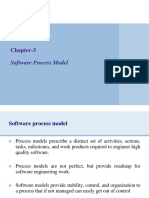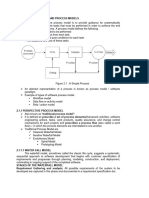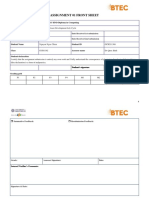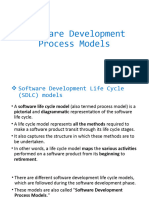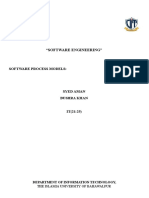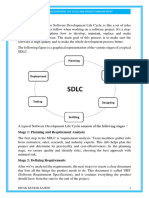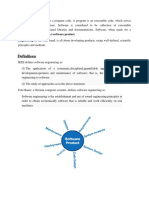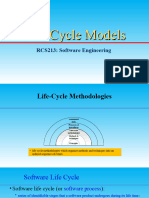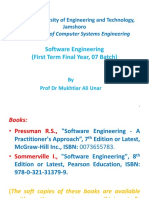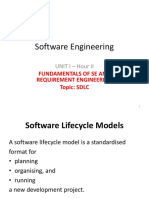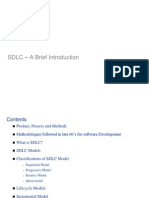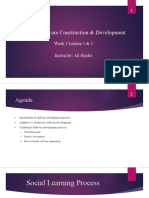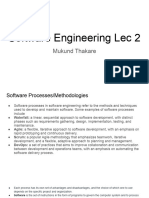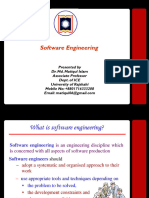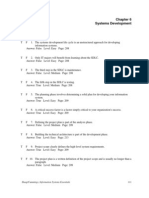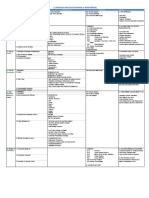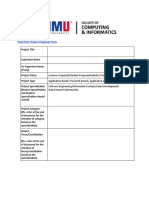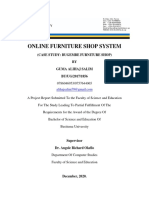0% found this document useful (0 votes)
8 views30 pagesUnit-1 Software Engineering
The document provides an introduction to software engineering, detailing the software process, development life cycle models, and specific methodologies like the Waterfall, V, and Prototyping models. It outlines key activities in software development, including specification, design, validation, and evolution, while discussing the advantages and disadvantages of each model. The document emphasizes the importance of selecting an appropriate development model based on project requirements and conditions.
Uploaded by
ayushraval212004Copyright
© © All Rights Reserved
We take content rights seriously. If you suspect this is your content, claim it here.
Available Formats
Download as PDF, TXT or read online on Scribd
0% found this document useful (0 votes)
8 views30 pagesUnit-1 Software Engineering
The document provides an introduction to software engineering, detailing the software process, development life cycle models, and specific methodologies like the Waterfall, V, and Prototyping models. It outlines key activities in software development, including specification, design, validation, and evolution, while discussing the advantages and disadvantages of each model. The document emphasizes the importance of selecting an appropriate development model based on project requirements and conditions.
Uploaded by
ayushraval212004Copyright
© © All Rights Reserved
We take content rights seriously. If you suspect this is your content, claim it here.
Available Formats
Download as PDF, TXT or read online on Scribd
/ 30



